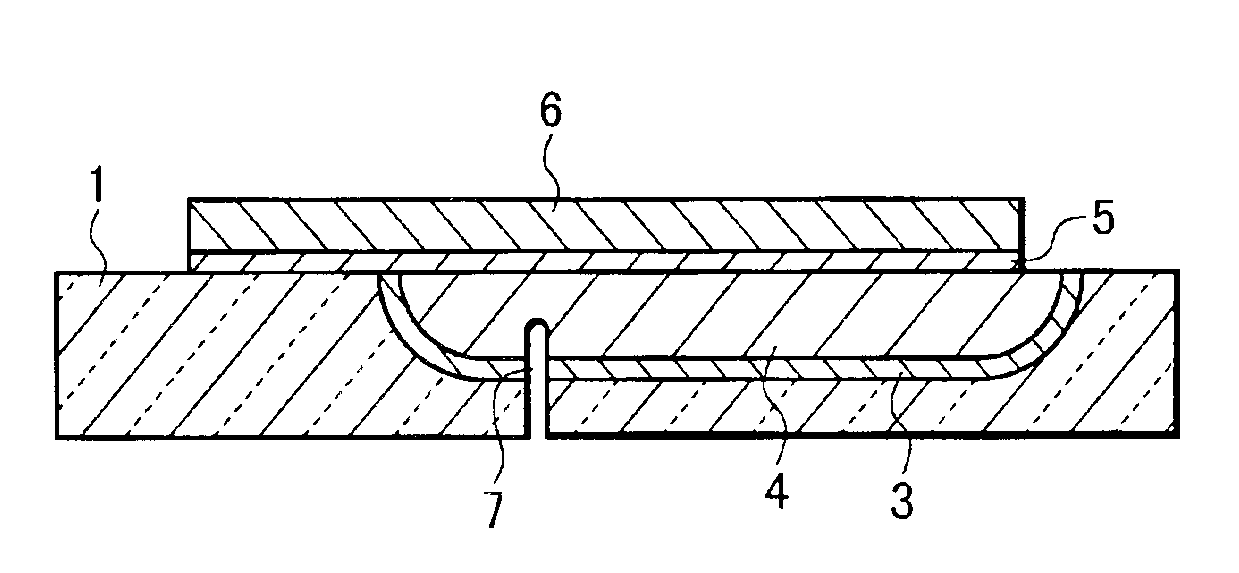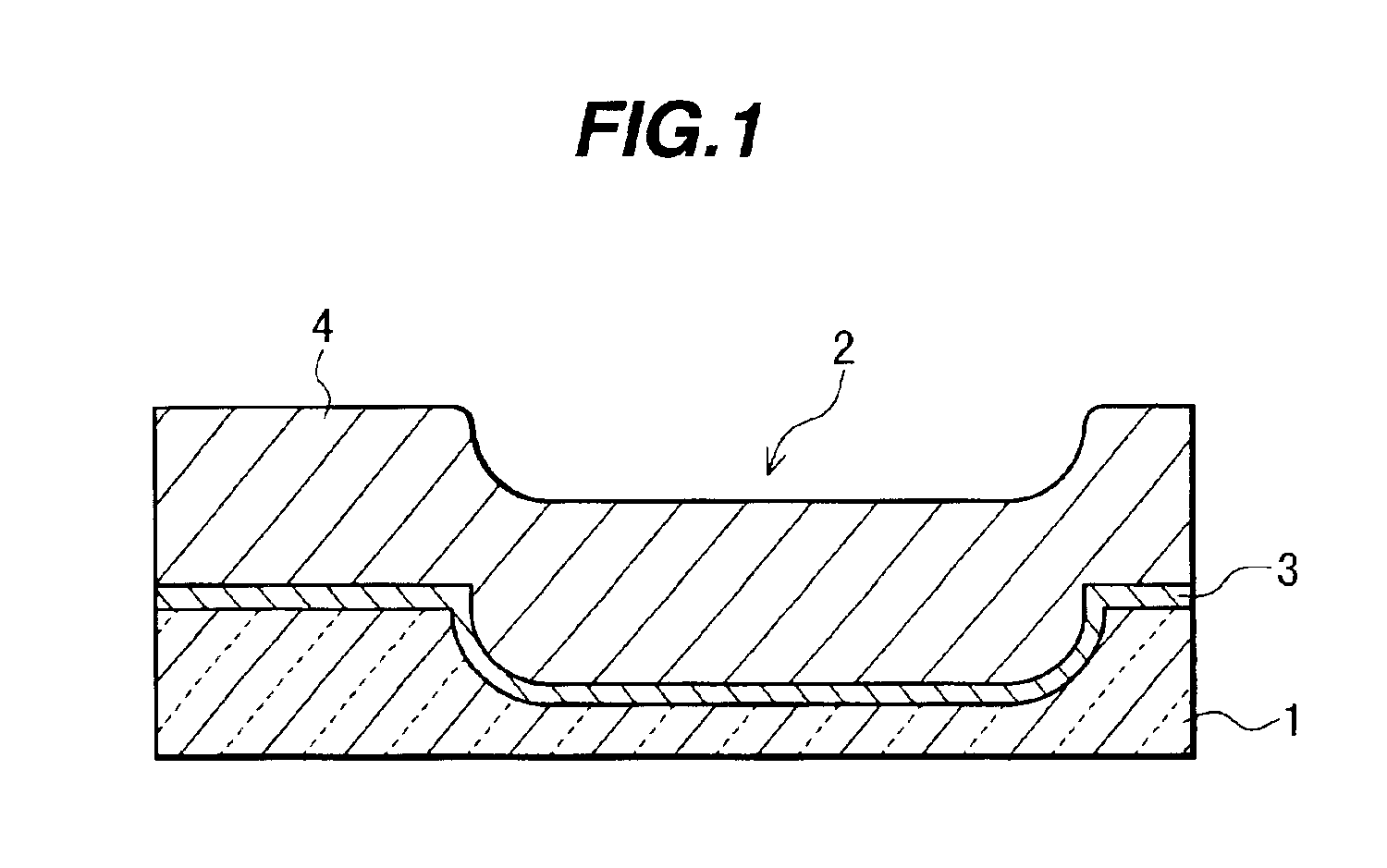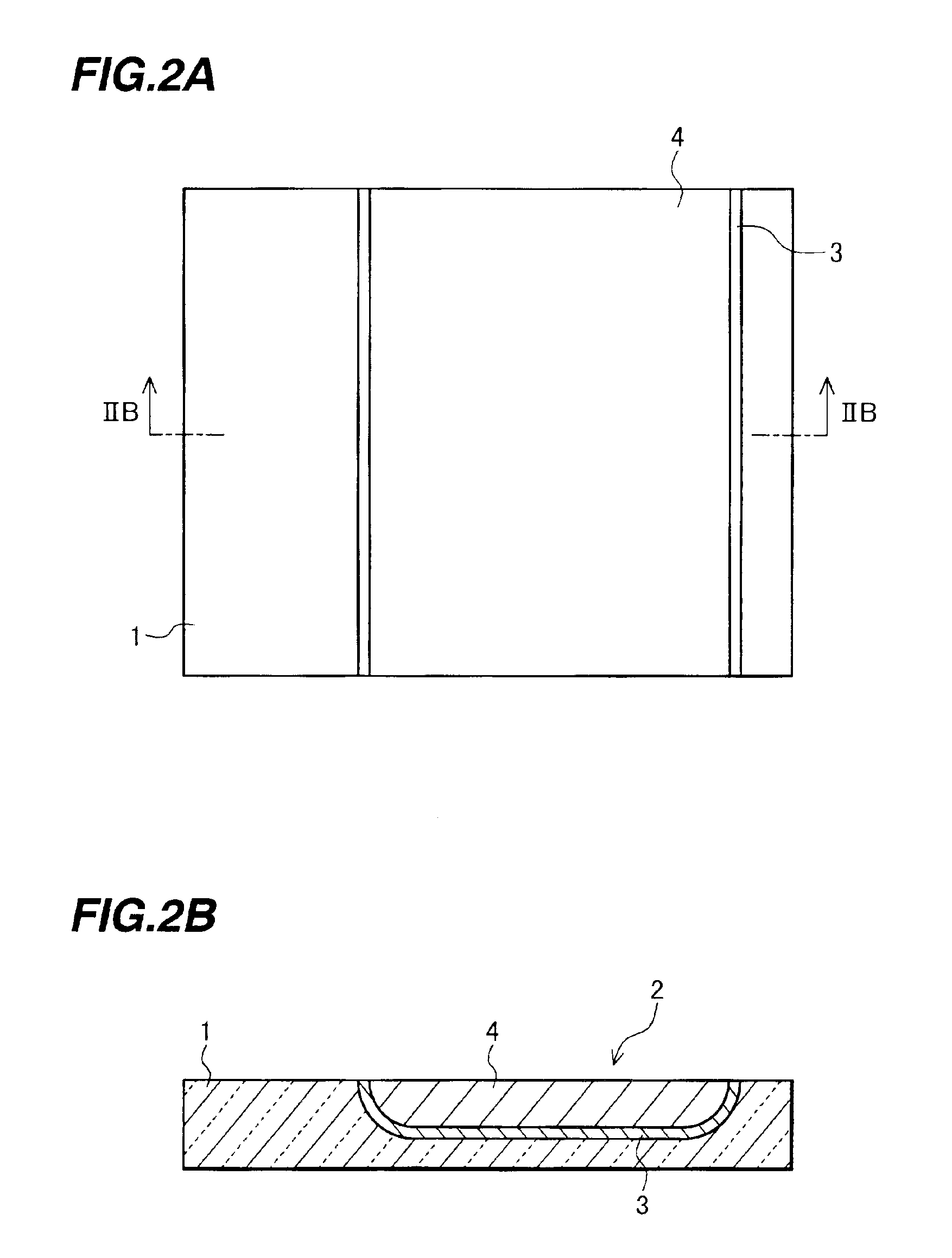Manufacture of probe unit having lead probes extending beyond edge of substrate
- Summary
- Abstract
- Description
- Claims
- Application Information
AI Technical Summary
Benefits of technology
Problems solved by technology
Method used
Image
Examples
example 1
[0064]In one surface layer of a glass substrate of 76.2 mm square and 0.66 mm in thickness, a recess having a width of 5 mm, a length of 76.2 mm and a depth of 0.3 mm was formed in parallel to one side of the substrate. The cross sectional shape of the recess at opposing end portions had a smooth arc shape having a radius of 0.5 mm. Chromium as a tight contact layer was sputtered on the surface of the substrate on the recess side, and copper as a plating underlayer was sputtered on the tight contact layer. Copper was plated to a thickness of about 0.35 mm.
[0065]The substrate was roughly polished by using abrasive grains having a diameter of 3 μm and 1 μm, and then finely polished by using abrasive grains having a diameter of 0.5 μm. The substrate was planarized by removing the metal layer on the substrate excepting the metal layer in the recess. Voids did not exist in the plated copper in the recess.
[0066]On the whole surface of the planarized substrate, a probe plating underlayer o...
example 2
[0087]Through holes of 5 mm×10 mm were formed through ceramic substrates not baked each having a thickness of 100 μm by using a punching machine. Twelve ceramic substrates were laminated. The through hole of the ceramic lamination substrate was filled with conductive copper paste (product name: CF-2800 manufactured by Harima Chemicals Inc.). This copper paste contains 20 vol % solvent. Since the copper paste contracts when it is heated, excessive copper paste was filled in the through hole to such an extent that the copper paste is swelled over the through hole. The substrate was placed in an oven and heated to evaporate the solvent. The copper was completely filled in the through hole. The top and bottom surfaces of the substrate were polished. The metal layer was completely filled in the through hole, and overflowed metal in the area outside the through hole was removed to expose the ceramic substrate.
[0088]Leads extending above the through hole were formed on the substrate in the...
example 3
[0099]Photosensitive etching glass was used as a substrate. By shielding one end area of the substrate, ultraviolet rays were applied to the other area by using an exposure machine with a ultra high pressure mercury lamp as a light source. Here the ultraviolet rays may include G line (436 nm), I line (365 nm), and / or H line (405 nm). Ti and then Ni were sputtered to the whole surface of the substrate to form a probe plating underlayer.
[0100]Resist was coated on the substrate, prebaked, exposed, hardened, developed and washed to form a resist mask having openings in areas corresponding to leads. On the plating underlayer exposed in the openings, an NiW layer was plated to a thickness of 30 μm. Next the resist was removed by ashing and the exposed probe plating underlayer was removed by milling.
[0101]The ultraviolet ray radiated area of the substrate was etched by 5-6% hydrofluoric acid, and washed by pure water. The substrate was baked to form crystallized glass. A probe unit having ...
PUM
 Login to View More
Login to View More Abstract
Description
Claims
Application Information
 Login to View More
Login to View More - R&D
- Intellectual Property
- Life Sciences
- Materials
- Tech Scout
- Unparalleled Data Quality
- Higher Quality Content
- 60% Fewer Hallucinations
Browse by: Latest US Patents, China's latest patents, Technical Efficacy Thesaurus, Application Domain, Technology Topic, Popular Technical Reports.
© 2025 PatSnap. All rights reserved.Legal|Privacy policy|Modern Slavery Act Transparency Statement|Sitemap|About US| Contact US: help@patsnap.com



